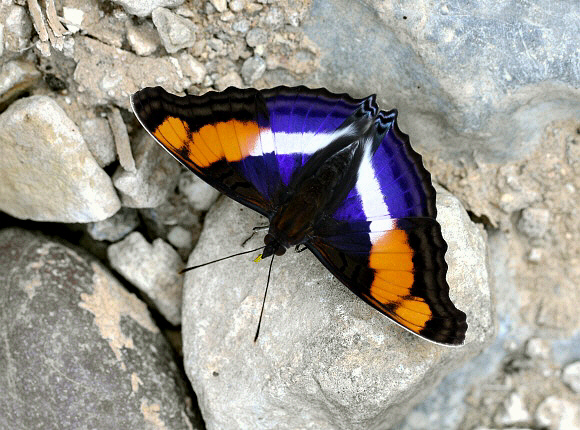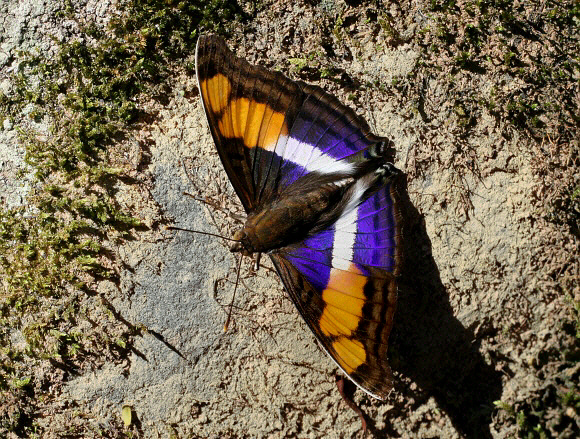
Introduction
The genus Doxocopa comprises of 15 medium-large neotropical butterflies from the Apaturini – the same tribe to which the Apatura Purple Emperors of Europe belong.
Doxocopa laure is the largest member of the genus. There are 6 subspecies, of which griseldis is undoubtedly the most beautiful, it’s magnificent purple sheen perfectly complementing the vivid orange band on the forewings, and the dazzling white band on the hindwings.
The deep purple sheen is the result of sunlight refracting from microscopic prismatic ridges on the surface of the scales. The colour is only present in males. It can only be seen when the butterfly is viewed at certain angles, and is more intense in bright sunlight.
Doxocopa laure is found in Texas, Arizona, throughout Central America, and in Jamaica and Cuba. In South America it occurs from Colombia to Brazil and Peru. There are 6 named subspecies. The illustrated subspecies griseldis is confined to the upper Amazon regions of Peru and Brazil, and the foothills of the Peruvian Andes.
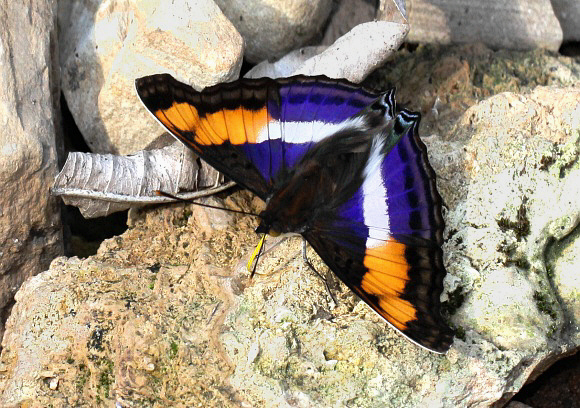
Habitats
This species breeds in deciduous and evergreen forest at altitudes between about 100-800m.
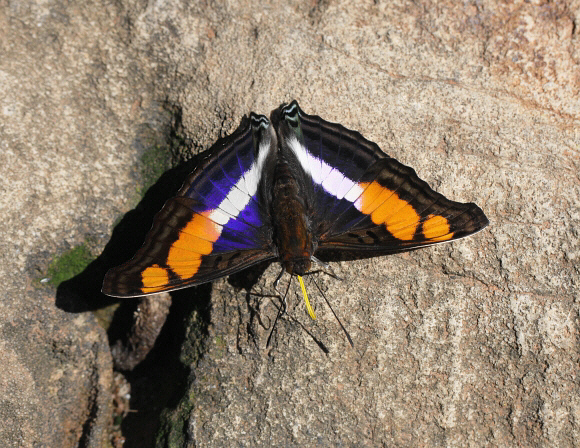
Lifecycle
The caterpillar feeds on Celtis species (Ulmaceae). When fully grown it is green, strongly tapered towards the anal segment, and has a pair of forward-projecting horns on its head.
The beautifully cryptic pupa is pale green and slightly flattened laterally. Dorsally, it has a prominent green shark-like thoracic fin and a series of 3 smaller abdominal projections. Overall the impression is of a living leaf, with serrated edges.
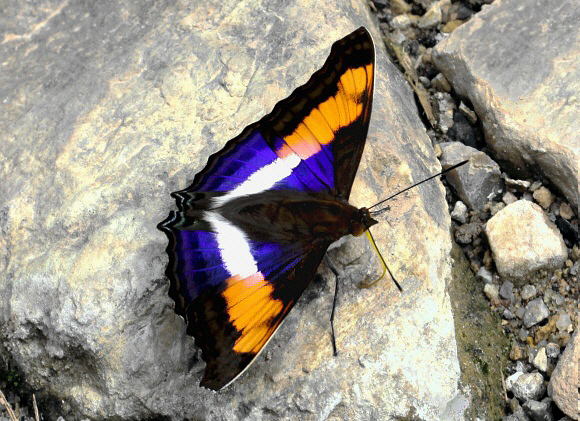
Adult behaviour
Males are strongly attracted to peccary wallows and other sources of mineral-rich moisture. They are very nervous and alert, but sometimes settle for a few moments on a boulder, log or tree trunk to bask and feed, with wings fully outspread.
